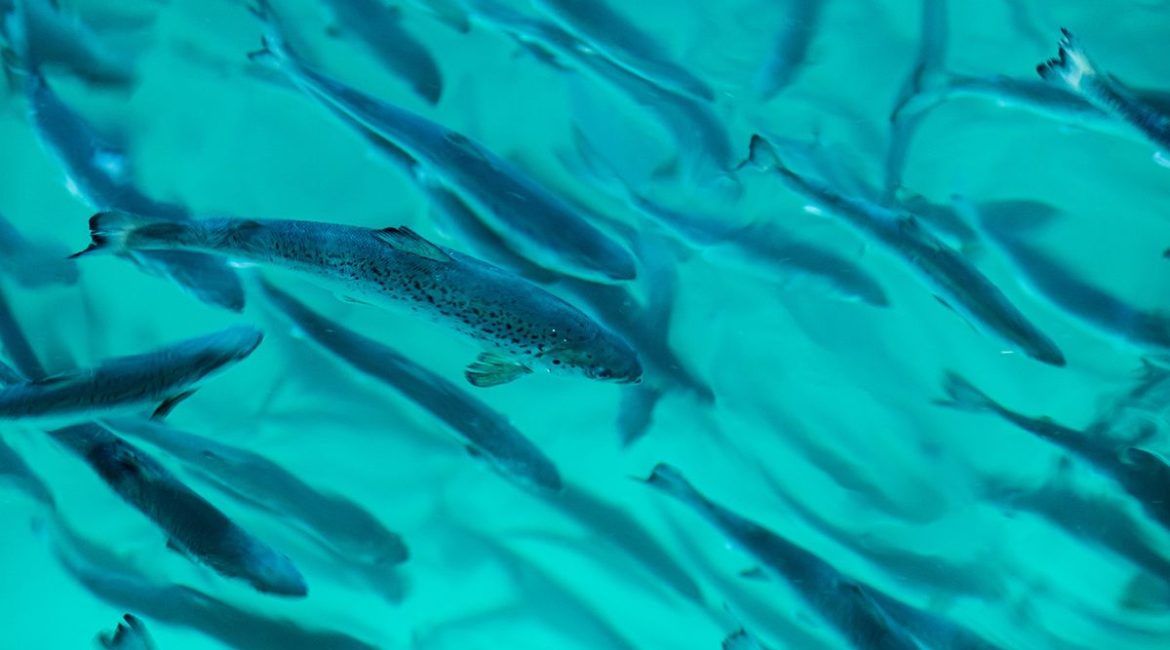As Salmon Evolution’s strategic partner and feed supplier, Cargill is very pleased with the strong results achieved with the first production.
Image: Ingjarl Skarvøy, chief operating officer at Salmon Evolution. Photo credit: Skarvøy Media
 “We are very satisfied with the interaction and the close cooperation we’ve had with Cargill so far, and are convinced that this partnership is an important part in creating the most optimal conditions for the salmon. Although the first harvest has already been a great success, we are confident that as we learn more and more, we will be able to continuously improve our operation and maximize production, while maintaining the highest quality standards,” said Ingjarl Skarvøy, Chief Operating Officer at Salmon Evolution.
“We are very satisfied with the interaction and the close cooperation we’ve had with Cargill so far, and are convinced that this partnership is an important part in creating the most optimal conditions for the salmon. Although the first harvest has already been a great success, we are confident that as we learn more and more, we will be able to continuously improve our operation and maximize production, while maintaining the highest quality standards,” said Ingjarl Skarvøy, Chief Operating Officer at Salmon Evolution.
“Most exciting for us has been how well the feed has performed and how well our feed design model would predict the production process,” said Sigurd Tonheim, Strategic Marketing and Technology Lead in Cargill’s Aqua Nutrition North Sea business.
The feed is specially developed for Salmon Evolution’s production facility where the water is partially reused. Cargill has worked closely with Salmon Evolution from the early stages to develop this feed and follow up along the way.
 “When we design EWOS-feed we use models for growth rate and feed performance to predict how effective our feeds will be. Backed by big data from decades of commercial production at sea, our models are very strong,” Tonheim said, adding that EWOS grower feeds for long have been the market’s best performing feeds for salmon at sea. Now he states it is safe to say the same applies for our feeds for salmon on land.
“When we design EWOS-feed we use models for growth rate and feed performance to predict how effective our feeds will be. Backed by big data from decades of commercial production at sea, our models are very strong,” Tonheim said, adding that EWOS grower feeds for long have been the market’s best performing feeds for salmon at sea. Now he states it is safe to say the same applies for our feeds for salmon on land.
However, the way Salmon Evolution produces fish, as well as other land-based fish farming, differs from fish farming at sea in many ways.
“Our feed design models for sea farming are therefore not relevant for designing feed for land-based farming. Together with Salmon Evolution, we therefore developed new models adapted to their production. This is to be able to predict the results of the feed, and together understand which feed design would be the best when all conditions are considered,” Tonheim explained.
Salmon Evolution’s hybrid facility sets special quality requirements for its salmon feed. It must have a very precise sinking speed, very little dust and no oil leakage – all to provide good water quality which in turn creates a good growth environment for the salmon. At the same time, it must take care of the salmon’s nutritional requirements.
“We are extremely excited to have completed our first harvest from the first batch of fish at our facility in Norway. This has given us valuable insight into how we can optimize the environment to make the salmon thrive and learn how to operate the facility in the best possible way. When we move the fish on land, it is all about providing the salmon with an environment that is as good, stable and natural as possible. It is therefore very important for us to have a quality feed that fulfills the nutritional and physical requirements of the feed, and that the feed supports the potential of rapid growth inherent in producing salmon in a land-based facility, and that the feed supports the potential of rapid growth inherent in producing salmon in a land-based facility,” Skarvøy stated.
Salmon Evolution has big ambitions. They want to be leaders in land-based salmon farming. The successful first harvest brings them a big step closer to the goal.
“Our philosophy for land-based fish farming is to design a feed that ensures stable operation of the production systems,” said Tonheim. “We are glad that we managed to deliver on the criteria that are important for Salmon Evolution, and that the production achieved such good results.”
30 000 fish were harvested November 7th. The rest of the first batch, which numbered 100 000 fish when released as smolt in March 2022, will be harvested during fourth quarter.
“The results from this batch will help us improve our models, and thus make Salmon Evolution the most important arena for continuing research and development for even more effective and sustainable feeds for their production,” Tonheim commented.
.

